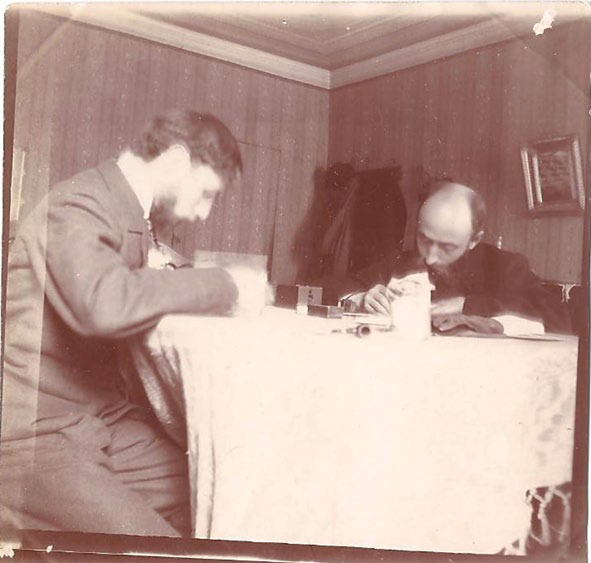
Edouard Vuillard, Place Vintimille, 1911. Five-panel screen, distemper on paper laid down on canvas, 90 9/16 x 23 5/8 inches (each panel). National Gallery of Art, Washington, D.C., Gift of Enid A. Haupt
One of the beautiful works in our current Snapshot exhibition is a 5 panel screen, 7 feet by 10 feet, painted in distemper on cardboard, Place Vintimille by Edouard Vuillard (1911).
Distemper in this case is not the viral disease of cats and dogs but a water-based paint, consisting of pigment, whiting, and hide glue. A simple recipe can be found online.
Distemper is a decorative rather than traditional artist’s material, used where permanence is not important.Vuillard probably became familiar and proficient in its use when he worked in theaters painting scenery. It’s cheap, easy to make, and dries fast. Because it uses hide glue as a binder and a pot of it will set up like gelatin, distemper is applied warm. Like gouache, it dries several shades lighter than applied.
Cardboard was a favorite material for Vuillard, since it was so affordable and absorbent. In combination with the matte distemper, he used it to emphasize the flat decorative qualities of his painting. Brown cardboard also acted as a unifying ground for his painting.
Vuillard’s Place Vintimille is an impressive example of a remarkable artist using ordinary materials, the equivalent of shirt cardboard and poster paints.
Ianthe Gergel, Museum Assistant
This post was originally titled “Distemper: No Animals Were Harmed in the Making of this Screen”, which a reader informed us was clearly erroneous as the hide glue used in distemper certainly implies the demise of the owner of said hide. -ed.


